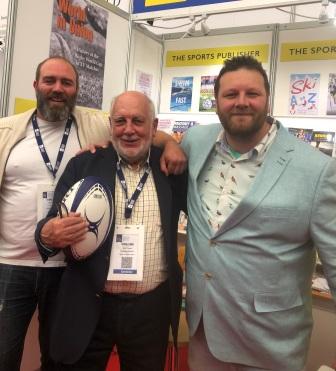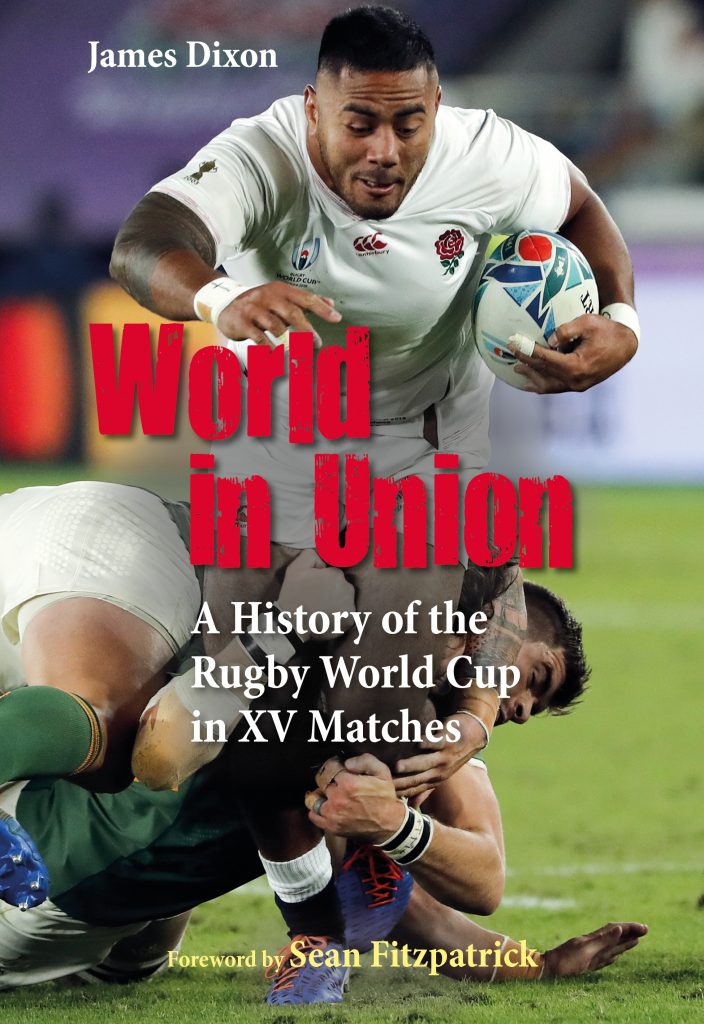James shares with us how his incredible ‘World in Union’ came about.

During the first Covid lockdown in 2020 World Rugby exploited their archive and made several classic Rugby World Cup encounters available to watch in full. It was manna from heaven for the sport starved.
While watching the 1987 Rugby World Cup pool game between Canada and Tonga I was struck just how much rugby had changed in the intervening thirty or so years. The lineout was a sea of hands, the kickers were using mounds of sand and if you blinked you might miss a scrum being awarded, formed and completed.
At half time, instead of retreating to the changing rooms to receive a flash debrief from their director of rugby backed up by his team of analysts the Canadians stayed on the pitch to hear from their captain Hans de Goede. “You’re making history” was the earnest sentiment De Goede conveyed to his men huddled around him, captured in perpetuity by a quick-thinking cameraman who stuck his equipment between two hairy Canadian legs to bring viewers the remarkably well-mannered speech.
I wanted to know more about how what I was watching became the Rugby World Cup I was used to ‒ and which is oft cited as the world’s third biggest sporting event after the Olympics and the FIFA World Cup.
I wanted to know more about how what I was watching became the Rugby World Cup I was used to.
My first instinct was to head to Google and choose from the no doubt plethora of great books dedicated to the subject. There were guides to previous tournaments and miscellanies that curated articles and writing on a loose World Cup theme but nothing that explained how the introduction of the Rugby World Cup shaped the modern game.
I’d just finished writing my book The Fix on the inaugural season of the UEFA Champions League and immediately saw the similarities between that and the Rugby World Cup. Both are tournaments born out of political and economic pressure and a fear that if the game’s authorities didn’t do something that was hitherto an anathema to them that they’d be swept aside by the forces of commercialism.
So, that was an interesting starting point. I pitched a long form article for Rugby World on thethirtieth anniversary of the Wales v Western Samoa game from the 1991 Rugby World Cup. This was a chance for me to see how easy or not it would be to get the first-person stories and anecdotes that turn narrative histories from dry factual exercises into characterful romps through time.

My conversations with Pat Lam, Apollo Perelini, Tony Clement and Robert Jones convinced me that not only would a history of the World Cup be possible but that it would be fun to do as well.
Conversations with Pat Lam, Apollo Perelini, Tony Clement and Robert Jones convinced me that not only would a history of the World Cup be possible but that it would be fun to do as well
The reconciliation of South Africa is a hugely important theme of the book. The Rugby World Cup began as a response to the void in rugby schedules thanks to the sporting boycott of apartheid South Africa and the last edition ended with the first black captain lifting the Webb Ellis Cup. As I learned during my research it was rarely a smooth journey.
Selecting the fifteen games that would be part of my history was the hardest part. Do you want the epic clashes between the big traditional teams? Do you want the thrilling games? Do you want the controversies? Do you want stunning upsets?
The truth is there are few mandatory inclusions. I never wavered on having New Zealand v South Africa 1995, France v New Zealand 1999, England v Australia 2003 or Japan v South Africa 2015 in my final fifteen. Beyond that the tournament is a bit of a choose your own adventure.
I never wavered on having New Zealand v South Africa 1995, France v New Zealand 1999, England v Australia 2003 or Japan v South Africa 2015 in my final fifteen. Beyond that the tournament is a bit of a choose your own adventure.
Take Fiji v Uruguay from 2019. Probably not the first match that comes to mind when you think of the Rugby World Cup but one of my favourites. The chapter isn’t just the story of a great game, it’s the story of Kamaishi: a rugby mad town devastated by the 2011 tsunami and whose regeneration was tied to Japan’s hosting of the 2019 tournament.
I hope you enjoy reading it as much as I enjoyed researching and writing about it.

‘World in Union: A History of the Rugby World Cup in XV Matches’ features a foreword by the incredible Sean Fitzpatrick. It is available now through all good bookstores and online retailers.
